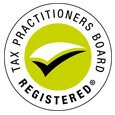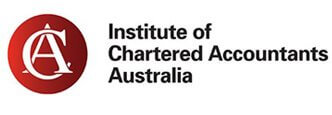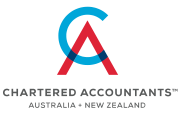Get on the front foot for your 2024-25 tax return
Here are some more detailed tips relating to a couple of common claims that often attract ATO scrutiny.
Working from home
A lot of people are still regularly working from home for at least part of the week. If you do, you are entitled to a deduction for the additional costs you incur. To be eligible to make a claim it is not necessary to set aside an area exclusively for business or employment related use. A shared dining table is all you need.
Except in very unusual cases, deductions are not available for occupancy costs such as mortgage interest, rent, rates and insurances.
Most people make their claim using the fixed rate method, which is 70 cents per hour for 2024-25. The fixed rate method covers home and mobile internet costs, mobile and home phone costs, power and gas charges and stationery and computer consumables.
Under the fixed rate method, you can also claim depreciation and repairs for assets used such as desks, office chairs and laptops, where those items cost more than $300. This is on top of the 70 cents per hour.
Alternatively, you could use the actual cost method, but that requires more detailed records and receipts.
We can help you to legitimately maximise your claim, but before you can claim anything, you need to have:
- A record of the hours worked from home. This has to be maintained for the entire 2024-25 financial year – you can’t just keep a detailed record for a representative period and apply it for the full year.
- One current sample invoice for each of the costs the fixed rate method is intended to cover – internet costs, phone costs, energy bills. It’s important to take copies of those invoices now and file them with your tax records rather than scramble around looking for them when the ATO comes asking for them in a few years’ time.
Use of your own vehicle for business or employment related purposes
For starters, any reimbursement you receive from your employer, either on a cents per kilometre basis or a flat amount, is assessable in your hands and will be shown on your payment summary. Not everyone who uses their own car for work is reimbursed in this way, however, and you are still entitled to make a claim, in spite of not receiving any reimbursement.
There are two alternative ways of claiming a deduction for business or employment related car use – the cents per kilometre method or the logbook method. For those who use the cents per kilometre method (which only applies to claims of up to 5,000 kms) the process is pretty simple – just multiply the kilometre figure by 88 cents. So if your business or employment related use was 4,000 kms, your 2024-25 claim would be $3,520.
Under the cents per kilometre method, you don’t need to keep a full-blown logbook that tracks every journey. However, the ATO may ask you how you came up with the claimed distance, especially where you’re pushing up against the 5,000 km threshold.
So you will need to have a diary of some sort that shows how you have estimated the kilometres being claimed – anything to prove you haven’t just plucked the figures out of thin air.
People sometimes get confused about what qualifies as business or employment related car use.
You can make a claim where:
- you travel to locations that are not your usual workplace;
- you have no fixed workplace and travel from site to site;
- you carry tools or equipment which are bulky and cannot be securely stored at your workplace;
- you drive to see customers or suppliers;
- you drive to seminars or to a second job.
Non-deductible travel includes situations where:
- you drive to and from your regular workplace;
- your employer pays your car expenses directly.
The logbook method is the alternative to the cents per km method. As the name implies, you need to keep a detailed logbook, but only for a representative period of twelve weeks to work out your business related use. Provided your pattern of car usage remains broadly the same, the resulting business use percentage is good for five years, after which you have to repeat the process. The logbook method might be more appropriate where your business or employment related car use is well over 5,000 kms.
For each journey, the logbook needs to show the date of the trip, the starting and finishing odometer reading, the distance travelled and the reasons for the journey. Where you are completing your logbook for the 2024-25 financial year, you need to complete the logbook entries during that year, after each trip. The logbook should come up with a business percentage, which can then be applied to all the costs associated with running the car, including depreciation. Receipts, invoices or other documentary evidence has to be maintained to verify the actual expenditure being claimed.
Car logbooks are available from Officeworks and most stationers, and can also be ordered online.
We can help you with the record keeping and logbook requirements.
Proposed Division 296 tax: Key issues and implications
The proposed Division 296 tax, which is proposed to start on 1 July 2025, introduces an extra 15% tax on superannuation earnings above a $3 million super threshold. Everyone supports a fair and sustainable superannuation system, but the new tax is unpopular for many reasons.
Two big reasons people don’t like the new tax is that the:
- Tax will apply on asset growth even if the asset hasn’t been sold
- $3 million dollar threshold will not be adjusted with
inflation
Let’s look at how the tax will apply on asset growth. The new 15% tax will apply on your super fund ‘earnings’ on the proportion of your super balance that exceeds $3 million. You might think that earnings are simply the profits you have made or locked in but that is not the case when it comes to this tax. Instead, earnings are based on how much your super balance has increased over the year. This includes ‘paper gains’ or increases in the value of assets not yet sold. This is a problem because your assets might be higher this year but may be lower when you sell them. In that case you have paid tax on ‘unrealised’ growth even though you didn’t make a profit. In fact you may subsequently sell the asset for a loss.
Another problem with taxing asset growth before the asset is sold is that you or your fund may not have the cash to pay the tax.
In that case it is likely that you will be forced to sell an asset you were not planning to sell just to pay the new tax.
Only ‘earnings’ attributable to assets over $3 million are subject to the additional 15% tax. The threshold might sound high but with inflation the threshold in today’s dollar value will fall. A young person entering the workforce today can expect to pay Division 296 in the future unless this threshold is adjusted for inflation.
Keep in mind that this new tax has not yet been legislated and it may be premature to withdraw money from super to avoid the tax.
If you are concerned about how Division 296 tax may impact your retirement savings give us a call and we can help you understand its implications and explore strategies to optimise your superannuation.
The CGT exemption for land adjacent to a home
The rules surrounding the circumstances in which a home will be fully exempt from capital gains tax (CGT) are quite extensive – and complex.
One crucial one is that the exemption is only available for a home and “adjacent land to the extent that the land was used primarily for private or domestic purposes in association with the dwelling.”
There are some key things to know about this adjacent land requirement.
Firstly, it only applies where the adjacent land is no greater than two hectares – but excluding the land immediately under the home. And two hectares is roughly the old five acre block – and it is pretty big, being 20,000 square metres ie, 200 metres by 100 metres. (Step it out around your neighbourhood and you will see how big.)
Of course, there would be few homes in major metropolitan cities that would approach this block size – albeit it may be an issue for homes on the rural outskirts of such cities.
In the case where adjacent land exceeds two hectares, a full CGT exemption on the sale of the home is not available and some sort of partial capital gain arises on a pro-rata or valuation method. And the ATO is quite generous on how this can be calculated.
Secondly, the adjacent land must be “used primarily for private or domestic purposes in association with the dwelling”. This would include where a granny flat is erected on the adjacent land and a child, a relative or other person lives in it rent-free (or only pays outgoings – and not arm’s length or commercial rent).
Likewise, it would include where adjacent land has other structures on the land such as a large shed, a pool and cabana, a tennis court – provided again that the land and these structures on it are “used primarily for private or domestic purposes in association with the dwelling”.
But what constitutes “primarily for private or domestic purposes…”?
The ATO has a ruling on this issue which broadly provides that “primarily” requires a judgment as to time (and/or area) of land that the land was so used.
So, if for example a home that was owned for 30 years originally had a shed on a small part of it in which the owner carried on a small “shed” activity for a year, it should be possible to conclude that the land was used “primarily” for private or domestic purposes.
But otherwise, only a partial CGT main residence exemption is available to the extent that the adjacent land was not so “used primarily for private or domestic purposes in association with the dwelling”.
Thirdly, the adjacent land need not be immediately surrounding the home. It could for example, include vacant land on a separate title across the road or next door (or such land that has a dwelling or other building on it) – as long as it is “used primarily for private or domestic purposes in association with the dwelling.”
However, the further the distance between the relevant land and the land on which your home is situated the less likely it is that the relevant land is “adjacent” land.
Finally, and importantly, if you sell (or gift or transfer) any part of adjacent land separately from the whole of your home and adjacent land (eg, on its subdivision) then no CGT main residence exemption is available for any capital gain or loss you make on this transaction. And this is because the exemption applies to the home in totality – which includes all of the adjacent land.
This issue also arises in relation to dual occupancy arrangement where the new dual occupancy dwelling may be sold separately from the original home. However, the ATO has detailed guidelines on how the CGT rules apply in these circumstances.
If any of these scenarios apply to you come and get some advice from us – if only for peace of mind’s sake.
30 June 2025 Tax & Super Checklist
With the end of the financial year coming up, now’s a great time to get on top of your tax and super. A little planning before 30 June can help you make the most of any opportunities to reduce tax, boost your super, and avoid last-minute surprises. This checklist outlines key things to consider and action before the financial year wraps up. It’s a simple way to stay on track and finish the year with confidence.





Need help? We’re here to help you make the most of EOFY tax and super opportunities. Contact us to discuss what options might work best for your situation.
Click here to view our Glance Consultants June 2025 Newsletter via PDF









